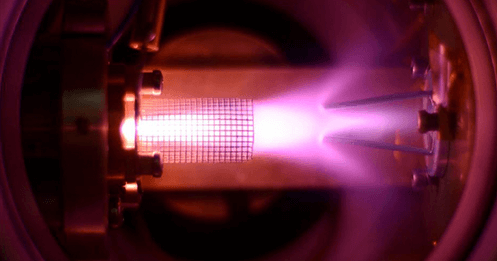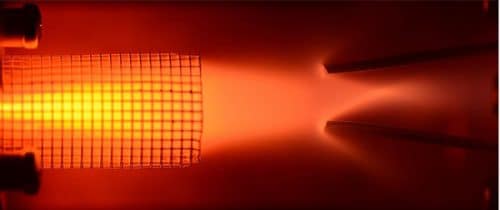Weizmann Institute scientists found the answer to the question in a surprising place: space engineering

The tiny, cone-like device used in experiments to study exotic phenomena in the world of quantum chemistry looks like an air intake in airplane engines, and it does play a similar role: directing gas flow. In an airplane, it controls the supply of air needed to burn fuel, while in experiments, the device shapes beams of cold atoms or molecules. While this cone, skimmer in English, has been a necessary component in experiments with atomic and molecular beams for decades, its use dictated a fundamental limit on the number of particles that could be packed into the beam. Now, revealing Prof. Edwards Narevicius and his research group in the Department of Chemical Physics at the Weizmann Institute of Science A simple way overcome this limitation.
Experiments with cold beams, which are conducted in laboratories around the world, allow researchers to observe the quantum behavior of atoms and molecules, for example as waves that interfere with each other. Combining different beams, as Narevičius and the members of the research group do in their laboratory, creates new and fascinating types of chemical reactions.
Narevičius explains that the extreme cooling needed for these experiments - close to absolute zero - is achieved by spraying a gas composed of atoms or molecules under high pressure in a container through a small nozzle into a vacuum chamber - that is, to almost zero pressure. The particles in the experiment spread into a very cold cloud moving at high speed. The cone-like device shapes some of this cloud into a beam shape. "It would be reasonable to think," says Narevičius, "that increasing the pressure of the gas in the tank, which causes more atoms to be released at once into the vacuum chamber, will cause the beam to have a higher density. But that's not how it happens. Above a certain pressure, the density remains constant. Researchers did not know how to overcome this limitation, which leaves many interesting experiments beyond the scope of the possible."

"It was a perfect problem for my student, Yair Segev," Narevičius adds. Segev came to the Weizmann Institute with expertise in the field of aeronautics and space. Using an algorithm used by aviation engineers to model flow in the upper atmosphere, Segev created simulations of the flow of particles through the cone. These simulations revealed the appearance of shock waves inside the cones, which blocked the flow of particles in the beam. This phenomenon results from an interaction between the particles of the beam and the cone: particles are returned from it at high speeds, collide and disrupt the flow of the beam. The high return speed is a result of the "high" temperature (room temperature) of the surface of the cone; That's why Segev tried the simulation with very cold cones. The results showed a significant weakening of the shock waves, as well as much denser beams.
Later, the group conducted experiments with different types of molecular beams, cooling the cones to lower and lower temperatures. Using neon and illuminating plasma allowed them to clearly see the results (see video). The researchers discovered that the shape of the shock waves changed and that the density of the beams did increase significantly with the cooling of the cones, and reached its peak when the temperature was less than a few tens of degrees above absolute zero - cold enough to freeze particles to the edge of the cone and thus, allow the rest to continue to flow "without feeling any disturbance from the cone". Narevičius says.
A simulation based on space engineering models revealed the existence of shock waves in the cold beams, due to the relatively "high" temperature of the cone-like devices used in the experiment:
